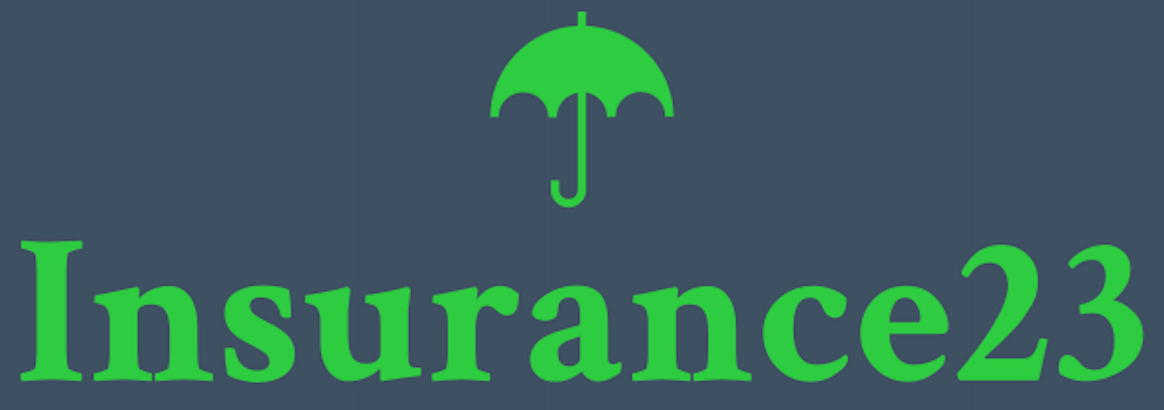Choosing the right life insurance can feel overwhelming with so many options available. Whole life insurance offers permanent coverage that lasts your entire lifetime, unlike term policies that expire after a set period. Whole life insurance provides not only a death benefit for your loved ones but also builds cash value over time that you can access while you’re still alive, making it both a protection plan and a financial planning tool.

This type of policy comes with higher premiums than term life insurance, but includes benefits like guaranteed death payouts, fixed premium payments, and a savings component that grows tax-deferred. Many people appreciate the lifelong coverage and peace of mind it brings, knowing their beneficiaries will receive a payout regardless of when they pass away.
Key Takeaways
- Whole life insurance provides permanent coverage with fixed premiums and builds cash value you can access during your lifetime.
- The policy costs more than term life insurance but offers guarantees and can be used as a long-term savings vehicle.
- Whole life works best for people with lifelong coverage needs or those seeking stable cash value growth alongside death benefits.
Understanding Whole Life Insurance

Whole life insurance offers lifelong protection with added financial benefits beyond a death benefit. It combines insurance coverage with an investment component that builds value over time, making it different from other insurance types.
What Is Whole Life Insurance?
Whole life insurance is a type of permanent life insurance that provides coverage for your entire lifetime. Unlike other policies that expire, whole life remains in force as long as premiums are paid.
The policy includes two main components:
- Death benefit: A guaranteed amount paid to beneficiaries
- Cash value: A savings portion that grows over time
Premiums for whole life insurance typically stay fixed throughout the policy’s duration. This means your payment amount won’t change, providing predictable costs for budgeting.
Most whole life policies also offer guaranteed investment growth within the cash value component. This growth happens on a tax-deferred basis, meaning you don’t pay taxes on the gains while they accumulate.
Differences Between Whole Life and Term Life Insurance
Whole life and term life insurance serve different purposes and come with distinct features:
Duration
- Whole life: Covers your entire lifetime
- Term life: Covers a specific period (usually 10-30 years)
Cost
- Whole life: Higher premiums (5-15 times more expensive)
- Term life: Lower, more affordable premiums
Cash Value
- Whole life: Builds cash value you can access
- Term life: No cash value or investment component
Term life functions purely as insurance with no additional benefits beyond the death benefit. Whole life, however, functions as both insurance and an investment vehicle.
The fixed premiums and death benefits of whole life make it more predictable but less flexible than other permanent insurance options.
How Cash Value Accumulation Works
The cash value portion of a whole life policy grows through a combination of:
- Premium payments (a portion goes to cash value)
- Guaranteed interest rates
- Potential dividends (in participating policies)
This cash value builds slowly in early years but accelerates over time. You can access this money in several ways:
- Policy loans: Borrow against the cash value (usually at favorable interest rates)
- Withdrawals: Take money directly from the policy (may reduce death benefit)
- Surrender: Cancel the policy and take the accumulated cash value
The cash value grows tax-deferred, meaning you don’t pay taxes on the growth until you withdraw it. In some cases, policy loans may be tax-free.
Many whole life policies from mutual insurance companies are “participating,” meaning they may pay dividends to policyholders. These dividends can be taken as cash, used to reduce premiums, or reinvested to purchase additional insurance.
Analyzing the Costs and Benefits

Whole life insurance offers permanent coverage with unique financial features, but comes with significant cost implications. Understanding both the price tag and potential advantages will help you make an informed decision about this long-term financial product.
Evaluating Premiums and Death Benefits
Whole life insurance costs substantially more than term life insurance. For example, a policy that might cost $282 annually for term coverage could require around $6,512 yearly for whole life for the same individual. This dramatic price difference reflects the permanent nature of the coverage and the cash value component.
Premium payments remain fixed throughout the policy’s lifetime, creating predictable expenses for budgeting purposes. These fixed premiums won’t increase as you age or if your health deteriorates.
The death benefit is guaranteed as long as premiums are paid, providing certainty for estate planning. Unlike term insurance that expires, whole life insurance ensures your beneficiaries will receive the death benefit regardless of when you pass away.
Advantages of Whole Life Insurance
Whole life insurance builds cash value over time that grows tax-deferred. This feature essentially combines life insurance coverage with an investment component.
The policy’s death benefit is typically tax-free for beneficiaries, creating an efficient wealth transfer mechanism. This tax advantage makes it attractive for estate planning purposes.
Some whole life policies earn dividends that policyholders can use to increase cash value, reduce premium payments, or purchase additional coverage. These dividends aren’t guaranteed but provide extra flexibility.
The cash value component can serve as a source of retirement income through policy loans or withdrawals. This creates financial security beyond the death benefit.
Disadvantages of Whole Life Insurance
The significantly higher premiums make whole life insurance unaffordable for many people. These costs can strain household budgets and potentially lead to lapsed policies if payments become unsustainable.
Whole life insurance offers subpar investment returns compared to dedicated investment vehicles. The cash value grows slowly, especially in the early years when insurance costs and fees consume a larger portion of premiums.
Early policy termination often triggers surrender charges, which can substantially reduce the cash value you receive. These penalties typically decrease over time but can be significant in the first 10-15 years.
The rigid structure offers less flexibility than buying term insurance and investing the premium difference separately. This “buy term and invest the difference” strategy may provide better returns for disciplined investors.
Additional Features and Riders

Whole life insurance policies offer flexibility through customizable options that can enhance your coverage. These features allow you to tailor your policy to meet specific financial needs throughout different life stages.
Optional Riders and Their Benefits
Life insurance riders are additional provisions you can add to your policy for expanded protection. These optional add-ons typically come with an extra cost but provide valuable benefits.
The accelerated death benefit rider allows policyholders to access a portion of the death benefit if diagnosed with a terminal illness. This can help cover medical expenses or other costs during the policyholder’s final months.
For ongoing health concerns, a chronic illness rider provides similar early access to death benefits when the insured cannot perform certain daily activities.
A long-term care rider helps cover nursing home or home health care costs. This can be less expensive than purchasing a separate long-term care insurance policy.
The disability waiver of premium ensures the policy remains in force if the insured becomes disabled and cannot pay premiums. This valuable protection prevents policy lapse during difficult times.
Policy Loans and Withdrawals
Whole life insurance provides financial flexibility through access to the policy’s cash value. Policyholders can borrow against this value through policy loans without credit checks or approval processes.
These loans offer competitive interest rates compared to other borrowing options. The outstanding loan amount plus interest will be deducted from the death benefit if not repaid during the insured’s lifetime.
Policyholders may also make cash value withdrawals, though these typically reduce the death benefit permanently. Partial surrenders might have tax implications if they exceed the policy basis (premiums paid).
A full cash value surrender terminates the policy in exchange for the accumulated cash value. This option should be carefully considered as it ends the life insurance coverage completely and may trigger tax liability.
Understanding these features helps policyholders maximize their whole life insurance benefits beyond the primary death benefit protection.
Deciding on Whole Life Insurance

Choosing whole life insurance requires careful evaluation of your financial goals and personal situation. This type of insurance offers both protection and potential investment benefits, but isn’t right for everyone.
Who Should Consider Whole Life Insurance?
Whole life insurance works best for people with lifelong coverage needs. It’s suitable for those who want guaranteed death benefits regardless of when they pass away.
People with high net worth might choose whole life as a financial planning tool for estate planning. The policy can help cover inheritance taxes, ensuring more assets reach their heirs.
Individuals with dependents who have permanent special needs often benefit from whole life policies. The guaranteed payout can fund a trust to provide ongoing care.
Those seeking predictable cash value growth alongside protection may find whole life appealing. Unlike term insurance, it builds value you can access during your lifetime through loans or withdrawals.
Parents might use whole life to leave an inheritance or help pay for medical bills after they’re gone.
Working With Professionals
A qualified life insurance agent can explain policy details and help determine appropriate coverage levels. They’ll walk you through premium costs, benefit amounts, and cash value projections.
Consider consulting a financial planner who specializes in insurance. They can analyze how whole life fits within your broader financial strategy.
When meeting with professionals, bring information about your:
- Current income and debts
- Existing insurance coverage
- Long-term financial goals
- Family needs
Be cautious of advisors pushing expensive policies with unnecessary riders. A good professional will focus on your needs rather than commissions.
Ask for illustrations showing cash value growth projections and compare offers from multiple companies. Remember that whole life is generally not considered the best investment vehicle for most people due to high costs and limited returns.
Frequently Asked Questions

Understanding whole life insurance requires clarity on crucial details regarding investments, cash value, taxes, and policy management. These answers address common concerns policyholders face throughout their insurance journey.
What are the pros and cons of choosing whole life insurance as a long-term investment?
Whole life insurance offers several investment advantages. It provides guaranteed death benefits and predictable cash value growth regardless of market conditions.
The permanent coverage lasts throughout a person’s lifetime, unlike term policies that expire. This permanence creates stability for long-term financial planning.
However, whole life insurance typically requires significantly higher premiums compared to term insurance. These costs can strain monthly budgets and may reduce funds available for other investments.
The rate of return on cash value typically falls below what might be achieved through direct market investments. This makes whole life less efficient for those primarily seeking investment growth.
How does cash value accumulation work within a whole life insurance policy?
Cash value builds gradually within a whole life policy through a portion of premium payments. This component grows at a guaranteed rate specified in the policy contract.
The accumulation occurs tax-deferred, meaning no taxes are owed on the growth while it remains within the policy. This can provide tax advantages over traditional savings methods.
As years pass, the cash value becomes increasingly accessible to the policyholder. It can be borrowed against, withdrawn partially, or used to pay premiums in certain circumstances.
What are the tax implications for beneficiaries receiving a whole life insurance payout at death?
Death benefits from whole life insurance are generally income tax-free for beneficiaries. This creates a significant advantage over many other financial assets transferred at death.
Beneficiaries receive the full face value without reduction for federal or state income taxes. This allows the entire amount to support their financial needs.
However, if the policy becomes part of a large estate, potential estate taxes might apply depending on total estate value and current tax laws. Proper estate planning can help minimize these concerns.
At what stage in life should an individual consider terminating their whole life insurance policy?
Policy termination might be appropriate when financial obligations have significantly decreased. For example, when mortgages are paid off and children have become financially independent.
Individuals who have accumulated sufficient retirement assets may find the ongoing premium payments unnecessary. The coverage may become redundant with other financial resources.
However, terminating a policy requires careful analysis of surrender charges, tax implications on cash value, and the continuing need for some death benefit protection. Professional financial advice is recommended before making this decision.
How do varying types of whole life insurance policies cater to different financial needs?
Traditional whole life provides consistent premiums and guarantees throughout life. This stability appeals to conservative individuals seeking predictable costs and benefits.
Limited payment whole life allows premiums to be paid over a shorter period (like 10 or 20 years), after which the policy remains in force without additional payments. This helps those who want future premium relief.
Single premium whole life requires one large upfront payment. This structure works well for those with substantial liquid assets seeking immediate coverage and cash value growth.
Can you explain the process and requirements for borrowing against a whole life insurance policy?
Borrowing against a whole life policy usually requires completing a simple loan request form. Most insurers process these requests quickly, often within days.
There are typically no credit checks or qualification requirements since the loan is secured by the policy’s cash value. This makes access relatively easy compared to traditional loans.
The policyholder can generally borrow up to 90-95% of the cash surrender value. Interest charges apply to the loan balance, and if not repaid, the death benefit will be reduced by the outstanding amount plus interest.





